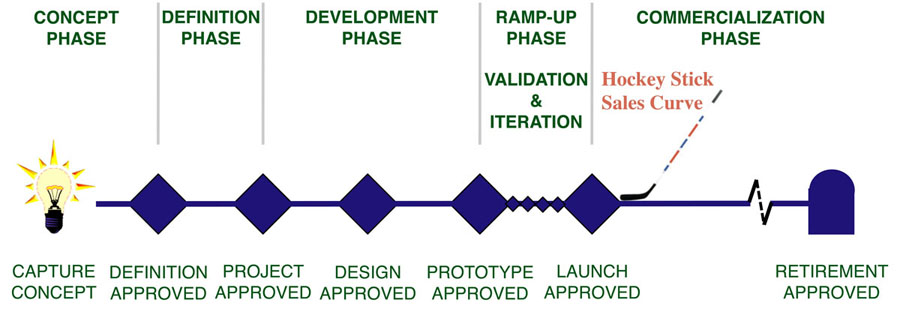Heads up, but don’t panic. It will be a while yet before something lands on your desk to which you will be asked to conform. But, an initial rail car has been put on the tracks and it is leaving the station.
Innovation is a relatively recent front and center corporate focus, right around a decade at this time. How can standards possibly be set, or even in development just yet? The truth is, innovation has been a subject of study and analysis for the past five decades. Best practices are currently being culled out, and many are nearing the ready point to enter the corporate mainstream.
Edward DeBono’s first book “The Use of Lateral Thinking” was published in 1967. By the 1980s, a number of large companies had used the “Lateral Thinking®” technique. There were enough positive results from the approach that corporations wanted more alternatives. Leading thinkers saw the opportunity to service an emerging market for innovation. Roger von Oech’s created his “Creative Whack Pack™” in 1989. This deck of sixty-four cards in four suits, four fundamentally thinking approaches, also gained corporate traction. There were only a handful more of “early providers” in this time frame, but corporate experiences were sufficient to make the case that innovation levels could be improved by external service providers.
Henry Chesbrough published his first work on “open innovation” in 2003. This seminal work opened up the traditional domain of innovation from being an internal-to-the-company initiative to making any and all things possible to better enable a company’s ability to innovate. When Boston Consulting Group teamed up with Business Week in 2004 to rank the most innovative companies on an annual basis, and companies could see their market cap rise or fall based on their movement in this annual list over the next several years, the innovation market took off. What resulted was a critical mass of companies that now wanted external tools and influencers to help themselves get better at innovating. Sufficient money could now be made servicing corporate demands. By 2008, GGI identified some two hundred seventy-five tools and/or service offerings available to corporations for the purpose of improving creativity and innovation [MD August 15, 2013]. Many of these offerings were from newly formed companies.
Is Engineering Ready To Standardize Innovation? [Machine Design – December 11, 2014] discusses the evolution of the innovation body of knowledge that has now resulted in the announcement of an “Innovation Management Framework [IMF]” by the Product Development & Management Association [PDMA].

![Goldense Group, Inc. [GGI] Logo](https://goldensegroupinc.com/blog/driving-product-development/wp-content/uploads/2022/03/logo-corp-darkBlue-65x65.png)